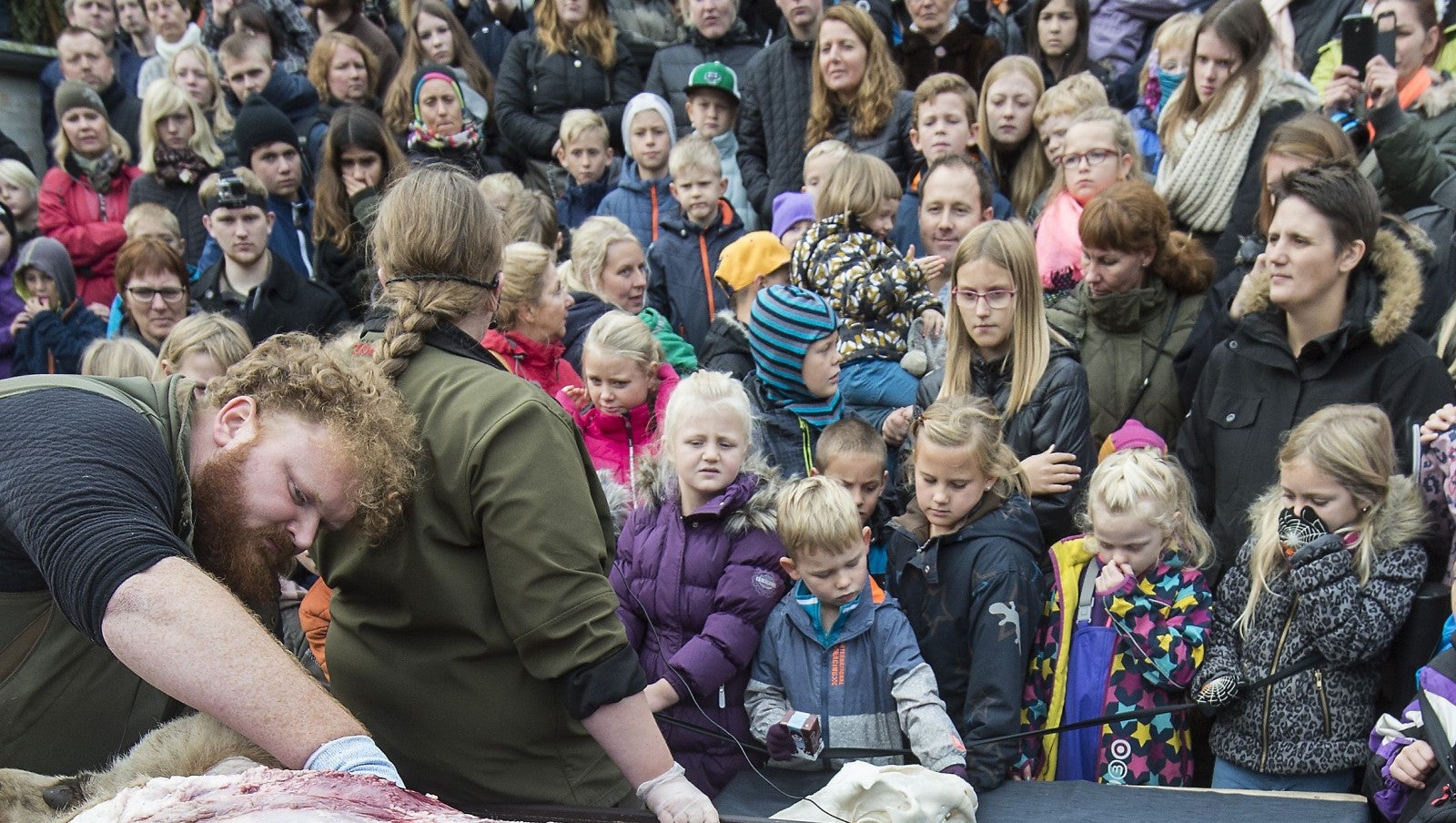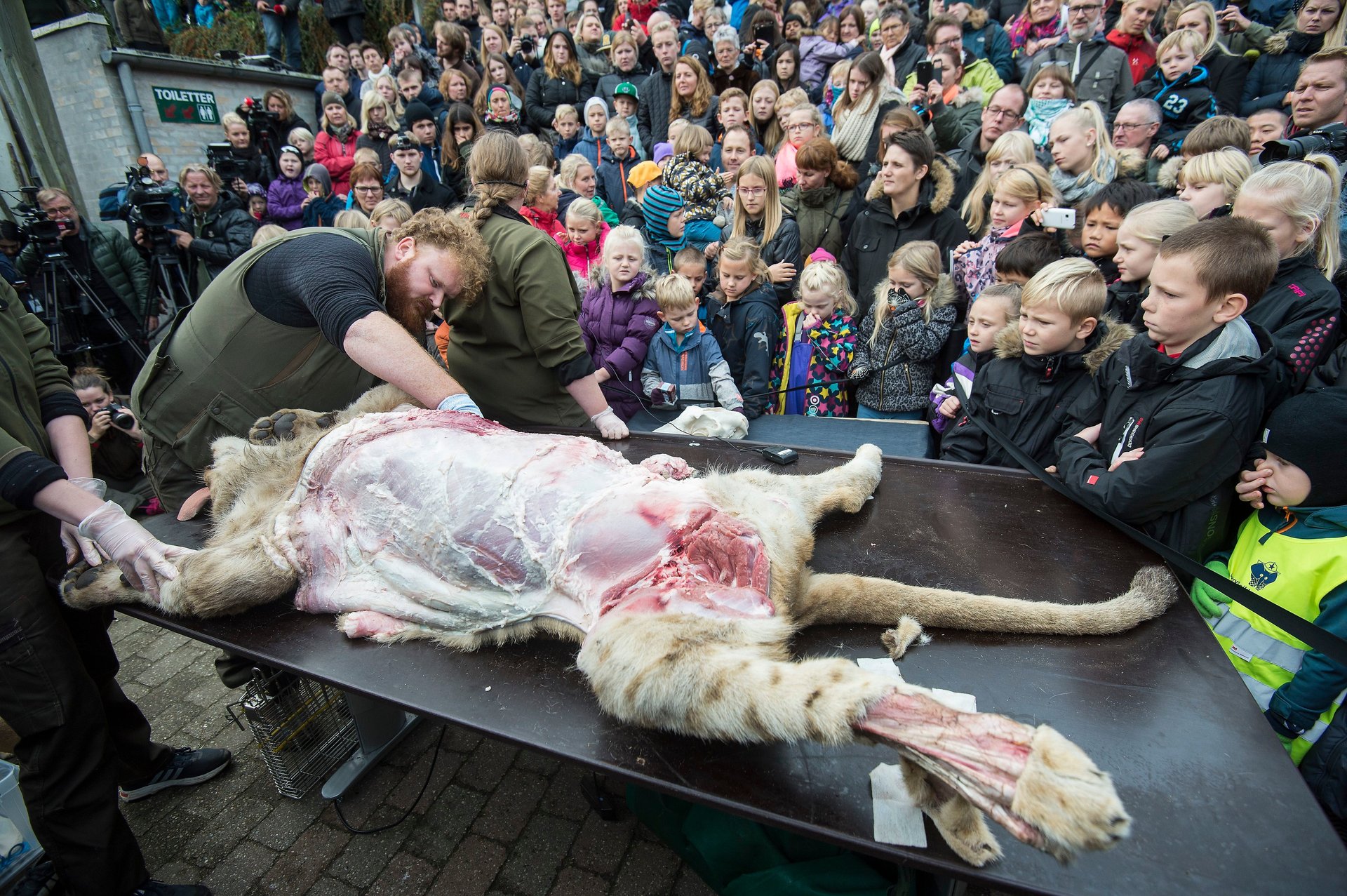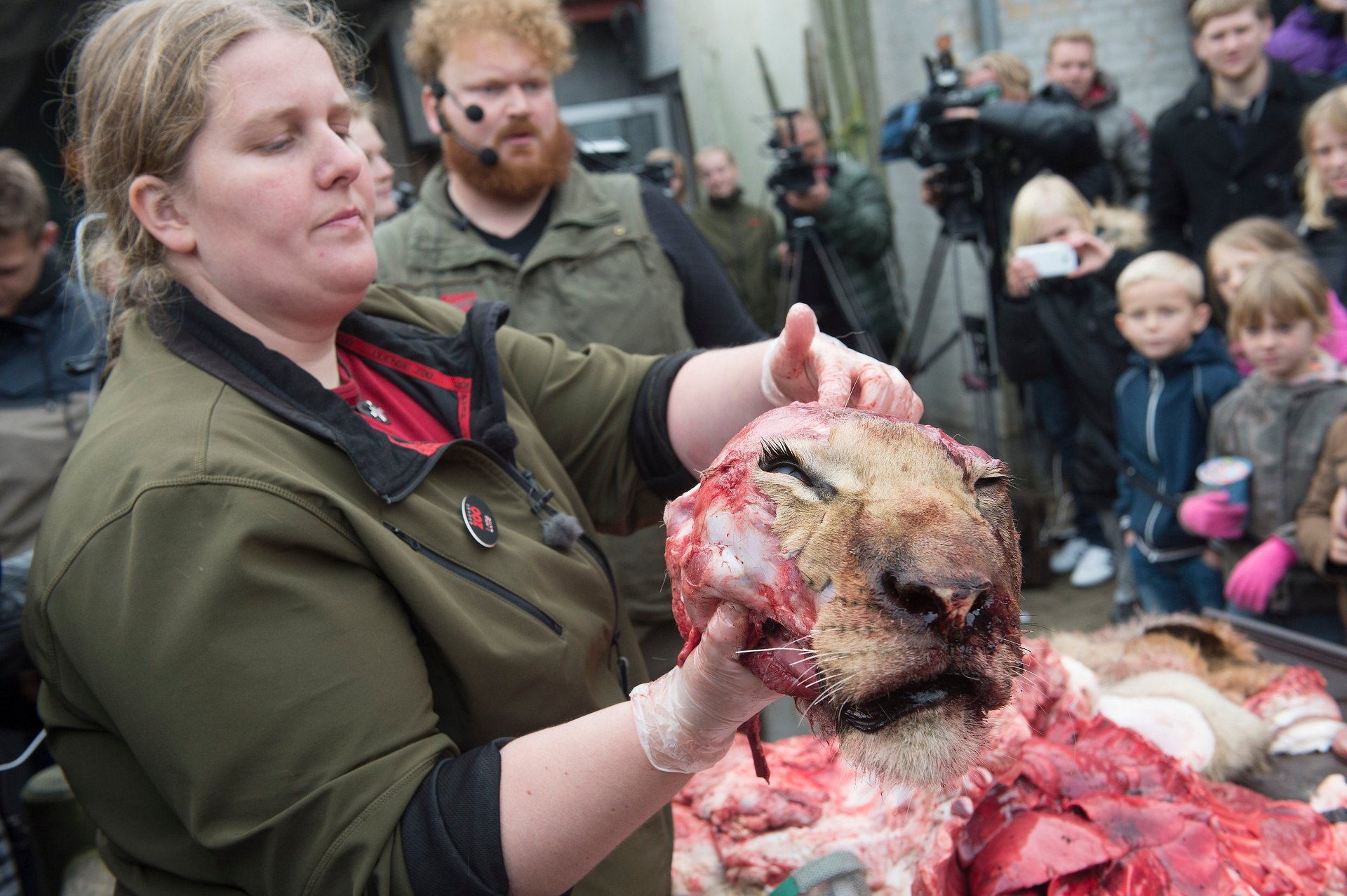A Danish Zoo killed and publicly dissected a “surplus” young lion
A year after zookeepers in Copenhagen received death threats on account of their plans to terminate a healthy giraffe, another Danish zoo animal is generating controversy. This time it’s a young lioness—or rather, the corpse of a young lioness.


A year after zookeepers in Copenhagen received death threats on account of their plans to terminate a healthy giraffe, another Danish zoo animal is generating controversy. This time it’s a young lioness—or rather, the corpse of a young lioness.
Biologists at the Odense Zoo, in Denmark’s third-largest city, were not prepared for an international outcry when they scheduled today’s public dissection of the lion, which they had killed in February when she was nine months old. The corpse was kept frozen and the dissection was deliberately scheduled during school holidays in Denmark, so children could attend for educational purposes.“We have been doing this for 20 years,” zoo biologist Nina Collatz Christensen told the New York Times, “and our experience is that the children are curious, ask questions and are not afraid.”
Previous public dissections at the Odense Zoo have included lions, a camel, and a pony, according to the BBC.
But in the wake of Copenhagen’s giraffe gaffe and the more recent #CecilTheLion debacle, the threshold for public outrage over animal deaths is perhaps lower than usual.
An article over at The Dodo, an increasingly influential media site, called the public dissection of the nameless animal “a particularly undignified end for this poor lion.” But the zookeepers insist that it’s not meant to be a provocative spectacle, just an honest look at wildlife anatomy.


As for why the lion was killed in the first place, it in part comes down to a matter of healthy population management. According to the Associated Press, the zoo said the only option for housing this lioness was in an enclosure with her biological father, and at some point they would likely mate, which would result in a bad case of inbreeding. She also might have been killed by another female lion while they competed for the father’s attention.
The European Association of Zoos and Aquaria told the AP it supported today’s event, that the Odense Zoo had made several unsuccessful attempts to find the animal a place in another zoo with “similar high welfare standards,” and that dissections are excellent educational tools.